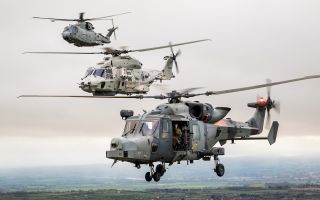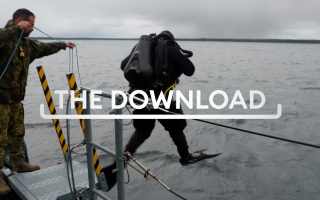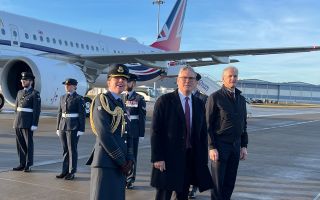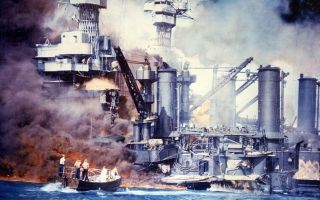Nato needs to radically change procurement to sufficiently arm Ukraine, expert says
Since the start of the invasion of Ukraine, Nato has stood alongside President Zelensky, providing Kyiv with the weapons it needs to fight back against Russian forces.
This includes ammunition, with Ukraine burning through 250,000 155mm artillery rounds a month – four times the production capacity of the US and EU before the war.
Countries across the alliance are now trying to meet that demand and are ramping up their ammunition production to support Ukraine.
But is it being done in the right way?
Jonathan D Caverley, professor of strategy at the US Navy's War College, told Forces News that munition procurement needs to radically change if Ukraine is to get the quantity of ammunition it needs.
"The goal of the suppliers, the supporters of Ukraine, is to get as many munitions in the hands of the Ukraine army as quickly as possible and as cheaply as possible while still having them function," he said.
"That's a much different project and a much different economic activity than, say, supplying even Challengers or M1A1 Abrams tanks or even a high-end UAV."
By 2028, the US plans to be making a million shells a year, but should nations like America and the UK be ploughing billions into homegrown production of these more basic weapons?
Prof Caverley believes such a procurement model may protect sovereign capability, but it is also inefficient and uneconomic.
Instead, Western nations should treat artillery shells, drones and shoulder-mounted missile systems as basic products that can be produced in bulk by companies across the globe – with the market finding the most cost-effective way to produce them.
Prof Caverley said to provide Kyiv with the quantity of ordnance it needs, Europe and the US need to make better use of their enormous buying power.
He argued that the US, the European Union and Nato would be buying the majority of the shells and could assign the production to whichever producer can get them made to the specifications fastest and for the best price.
Prof Caverley added that the market could also help solve the lack of standardisation of weaponry, with 15 manufacturers making 155mm shells in Europe.
But not all the rounds are identical, which is proving to be a massive problem for Ukrainian artillery crews trying to counter the Russian onslaught.
"It's actually pretty embarrassing for Nato because even our 155mm standards aren't that great," he said.
He said there were stories of Ukrainian troops having to weigh shells to work out what they were working with, before entering the data into a spreadsheet to recalculate the ballistics to get the ordnance on target.
"And that's a 155mm shell which we've supposedly standardised over time," he added.
Prof Caverley said senior officials at the Pentagon were listening to his arguments, with the war in Ukraine offering a once-in-a-generation chance to rationalise the way defence procurement works.
It would result in removing duplication and standardising more weaponry while giving Ukraine the ammunition and supplies it wants at the speed and quantities it so badly needs.









